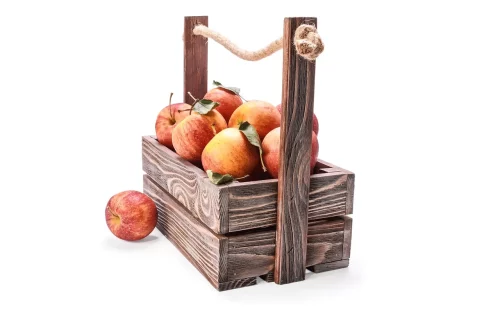
Choosing the Perfect Little Dog Bowls for Your Furry Friend
Choosing the right bowl for your small dog is more than just a matter of aesthetics; it’s an essential aspect of their daily care. Just like humans, dogs have specific needs when it comes to eating and drinking. A well-designed bowl can enhance their dining experience, promoting better eating habits and overall health. When selecting a bowl, factors such as size, material, and functionality play crucial roles in ensuring your furry friend enjoys their meals comfortably.
For small dog owners, the challenge often lies in finding the perfect balance between style and practicality. With a vast array of options available on the market, it can be overwhelming to make a decision. Whether you’re looking for something decorative to complement your home or a bowl that caters to your pet’s unique needs, understanding the available choices can simplify the process. The right bowl not only contributes to your dog’s well-being but can also be a delightful addition to your home décor.
Let’s explore some key considerations that will help you choose the ideal little dog bowls for your beloved pet.
Understanding Your Dog’s Needs
Before making a purchase, it’s essential to consider your dog’s specific needs. Different breeds and sizes of dogs have varying requirements when it comes to their feeding habits. For instance, small breeds like Chihuahuas may need shallower bowls to reach their food comfortably, while others may prefer deeper bowls that prevent food from spilling out.
Your dog’s age and health status also play a significant role in determining the best bowl. Puppies may require a different style compared to adult dogs, as they are still developing their eating habits. Older dogs or those with mobility issues might benefit from elevated bowls designed to reduce strain on their necks and joints.
Additionally, consider your dog’s eating style. Some dogs are enthusiastic eaters and may benefit from slow-feed bowls that prevent gulping, which can lead to digestive issues. Others may need a non-slip base if they tend to push their bowls around during meals. Understanding these nuances will help you choose a bowl that caters to your pet’s unique eating habits and promotes a healthy lifestyle.
In summary, knowing your dog’s specific needs and preferences is the first step toward selecting the perfect bowl. Take the time to observe how your dog eats and what might make their mealtime more enjoyable and efficient.
Materials Matter: Choosing the Right Bowl
The material of the dog bowl is a crucial factor that can affect both the safety and comfort of your pet. Various materials have their pros and cons, and your choice should reflect your dog’s habits and health considerations.
Stainless steel bowls are a popular choice among pet owners due to their durability and ease of cleaning. They are resistant to rust, do not retain odors, and are dishwasher safe. However, some dogs may find the noise of metal bowls unsettling, so it’s worth considering your pet’s temperament before making a decision.
Ceramic bowls are another stylish option that adds a decorative touch to your home. They come in various designs and colors, allowing you to choose one that complements your décor. However, ceramic bowls can chip or break, posing a potential hazard for your dog if they ingest any fragments. Ensure that any ceramic bowl you choose is lead-free and dishwasher safe for easy maintenance.
Plastic bowls are lightweight and often less expensive, making them an attractive option for many dog owners. However, they can scratch easily, leading to bacteria buildup. It’s crucial to replace plastic bowls regularly to maintain hygiene. Additionally, some dogs may develop allergies to certain types of plastic, so keep an eye on your pet for any adverse reactions.
Ultimately, the best material for your dog’s bowl depends on their specific needs and your personal preferences. Consider durability, safety, and aesthetics when making your choice.
Size and Shape: Finding the Right Fit
Selecting the appropriate size and shape for your dog bowl is essential to ensure a comfortable eating experience. A bowl that is too small can lead to spills and mess, while a bowl that is too large may overwhelm a small dog during mealtime.
When choosing a bowl, consider your dog’s size and breed. Generally, small dogs require bowls that hold less than 1-2 cups of food or water. Look for bowls that are not too deep, as shallow bowls make it easier for your furry friend to reach their food without straining.
The shape of the bowl also matters. Some dogs prefer a wider bowl that allows them to spread out their food, while others might feel more comfortable with a deeper, narrower design. Pay attention to your dog’s eating behavior and preferences to ensure you choose the right shape.
Elevated bowls are another consideration, particularly for small dogs that may struggle with bending down. Elevated bowls can promote better posture and easier access to food and water. However, be sure to select a height that suits your dog’s size and allows them to eat comfortably without straining.
In summary, the right size and shape of the dog bowl can significantly enhance your pet’s dining experience. Measure your dog’s height and consider their eating habits to find the perfect fit.
Style and Aesthetics: Complementing Your Home
While functionality is paramount when choosing dog bowls, aesthetics also play a crucial role, especially for pet owners who want their home décor to reflect their personal style. Fortunately, there is no shortage of stylish options available in the market.
From vibrant colors to elegant designs, dog bowls can serve as decorative elements in your home. Many brands offer customizable options, allowing you to choose patterns, colors, and even engrave your pet’s name on the bowl. This not only adds a personal touch but can also make meal times feel special for your furry friend.
When selecting a bowl that complements your home décor, consider the overall color scheme and style of your space. A modern home may benefit from sleek, minimalist designs, while a rustic-themed space might call for ceramic bowls with earthy tones. The key is to choose bowls that blend seamlessly into your living environment.
Moreover, consider the space where you plan to place the bowls. If you have a designated pet area, you may want to choose bowls that fit that space perfectly. Additionally, consider the ease of cleaning when selecting decorative options, as some materials may require more maintenance than others.
In conclusion, finding a balance between style and functionality will ensure that your little dog’s bowls are not only practical but also enhance your home’s aesthetic appeal. With a little creativity and consideration, you can choose bowls that showcase your pet’s personality while keeping their needs met.
Choosing the perfect little dog bowls for your furry friend involves a thoughtful approach that takes into account their unique needs and your personal style. By understanding their specific requirements, selecting the right materials, and considering size and aesthetics, you can enhance your pet’s dining experience while enriching your home environment. Remember, a well-chosen bowl is not just a dining accessory; it’s an integral part of your dog’s daily routine and well-being.
**Disclaimer:** This article is for informational purposes only and should not be considered medical advice. Always consult a veterinarian for any health-related concerns regarding your pet.




